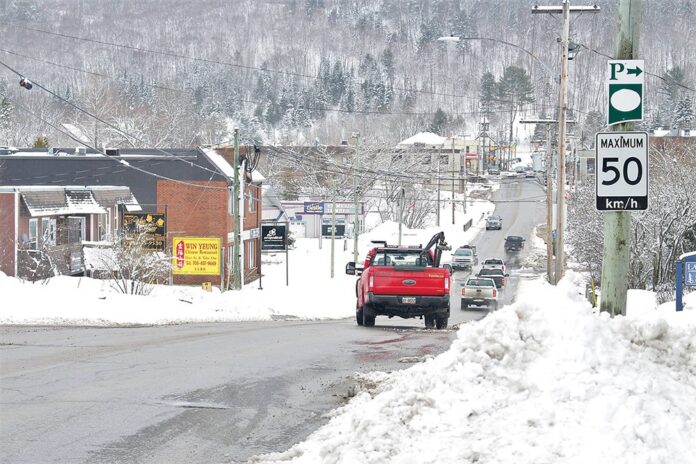Approximately half of Dysart’s roads have insufficient or no speed limit signage according to a consultant tasked with reviewing the municipal network.
Joshua de Boer, a project manager with Paradigm Transportation, presented a report to council Jan. 23 analyzing the township’s entire roads system. He noted Dysart has 315 kilometres of roads it maintains and operates, with two thirds having a hard top surface and one third gravel.
De Boer said 48.9 per cent of the network has a posted limit of 50 km/h, with 2.1 per cent set at 40 km/h. The rest, about 49 per cent, are currently unposted, which, per the Highway Traffic Act, means the accepted limit is 80 km/h. Public works director, Rob Camelon, said this poses problems for the township.
“I’m not a big believer in signage quite honestly, but the crux of this report is if we don’t pass bylaws and don’t sign [appropriately], our roads are, by default, 80 km/h, and that will have impacts on our minimum maintenance standards,” Camelon said. “At the very least, we should be revisiting our bylaws and ensuring we have the proper signage up [along roads of concern].”
It was recommended that all roads currently operating with an unposted limit should be capped at 50 km/h. Roads in an urban area, like Haliburton village, should be 50 km/h, with most rural routes carrying an 80 km/h limit. De Boer said there are four roads in Dysart operating with a 40 km/h limit – Bitter Lake Road, Grass Lake Road, Green Lake Road, and Universal Road. He’s recommending they be maintained.
Of the 101 signs the township currently has installed on its roads, 41 per cent are considered to be in poor condition.
De Boer outlined the need for upwards of 100 new road signs, saying 85 per cent of municipal roads require extra signage.
He noted standards for sign placement is outlined in the Ontario Traffic Manual, with different recommendations for roads in builtup areas and rural thoroughfares. Generally, de Boer said most urban roads require signs every 300 to 900 metres. For roads with a limit of 70 km/h or higher, signs should be spaced at least a kilometre apart.
Camelon added that simply placing a sign at the start and end of a road does not change the speed limit. He said speed signs should be installed at all major intersections.
The consultant said he spent much of October 2022 analyzing local roads, looking at traffic patterns and driver habits. The cost of the report – $39,300 plus taxes – was covered by money from the municipal modernization fund, Camelon noted.
Mayor Murray Fearrey said installing the number of signs outlined in the report would be a costly exercise for the township.
“It’s going to cost $100,000 to put all those signs in, and we’d only be knocking them down [with plows] during the winter. I’m not sure people pay attention when there’s no enforcement anyway,” Fearrey said.
De Boer said council has two options for enforcement – police or machine. He recommended a mix of both. He noted automated speed signs (ASE) offer many advantages over traditional manual speed enforcement, including higher rate of vehicle detection and improved accuracy tracking a vehicle’s speed.
“ASE is a supplement, not a replacement, for other enforcement methods… it’s use is limited to select portions of a road, like community safety zones and school zones,” de Boer said.
Paradigm Transportations is currently doing a similar study in Algonquin Highlands, de Boer noted.
Camelon said he would present a followup report to council, likely at its Feb. 27 meeting, where he will provide his recommendations. Fearrey said council would appreciate further guidance.
“This is as clear as mud right now… we need more on where we should go with this. We couldn’t possibly put all those signs up, it’s going to be virtually impossible,” Fearrey said. “But, if we have an obligation, we’ll have to honour it and [figure out a way] to do it.”





